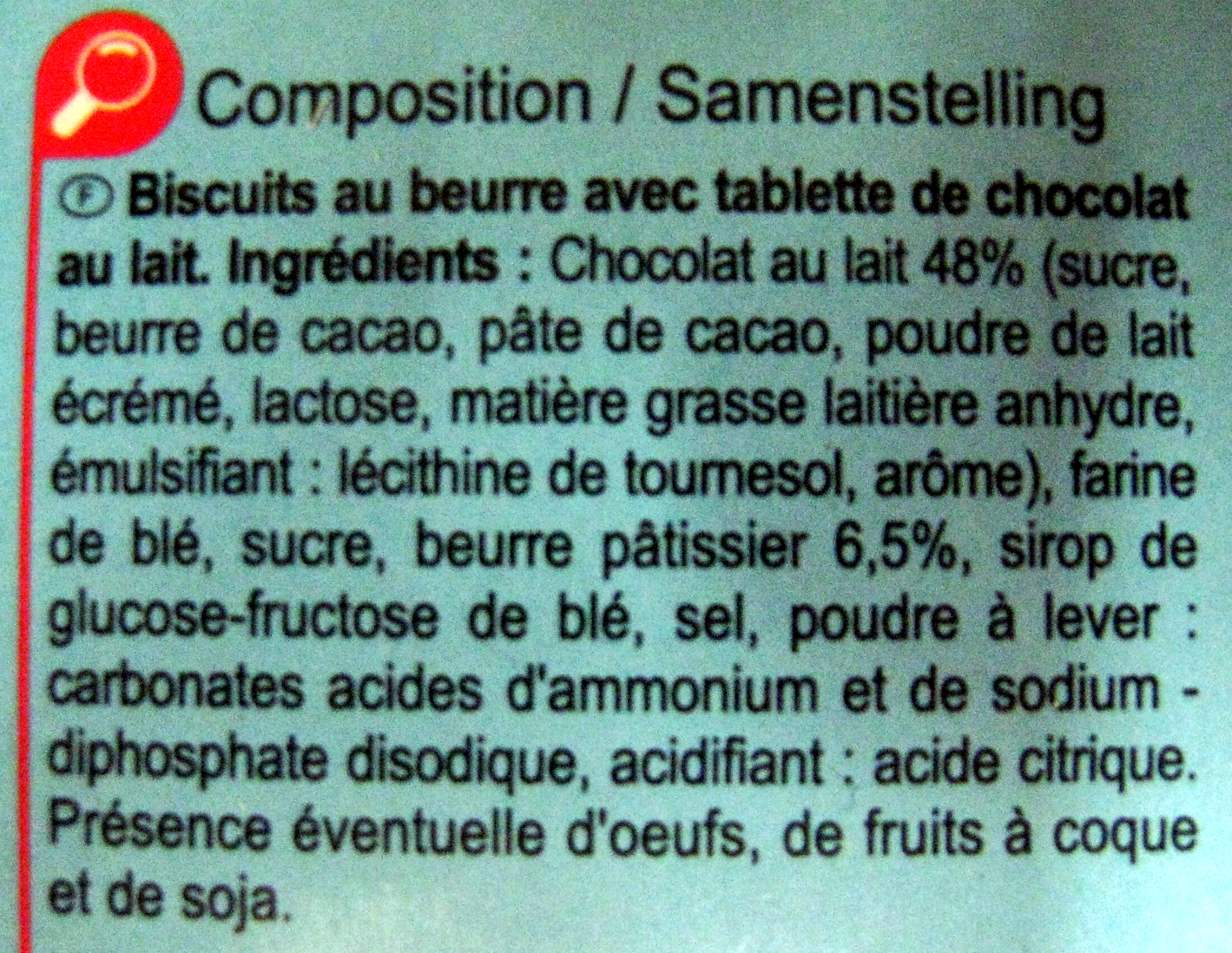Les Tablettes AU CHOCOLAT AU LAIT - Carrefour - 150 g
Aquesta pàgina del producte no està completa. Podeu ajudar a completar-la editant-la i afegint-hi més dades a partir de les fotos ja disponibles, o fent-ne més amb l'aplicació de androide o iPhone / iPad. Gràcies!
×
Algunes de les dades d’aquest producte les ha proporcionat directament el fabricant Carrefour.
Codi de barres: 3560070759323 (EAN / EAN-13)
Nom comú: Biscuits au beurre avec tablette de chocolat au lait.
Quantitat: 150 g
Empaquetament: en:Bag, en:Box, Cartó, en:Individual bag, fr:Sachet plastique
Marques: Carrefour
Categories: Snacks, Aperitius dolços, Galetes i pastissos, Galetes, Galetes de xocolata, en:Milk chocolate biscuits, en:Petit-Beurre, en:Biscuit with a chocolate bar covering, en:Biscuit with a milk chocolate bar covering, en:Butter biscuit with chocolate
Etiquetes, certificacions, premis:
Punt verd, Fet a França, Nou
Origen del producte i / o dels seus ingredients: Ces biscuits sont élaborés à Pessac en Gironde avec du blé français, du beurre et du chocolat au lait fabriqués en UE.
Productor: Fabriqué en France par EMB 33318A pour Interdis.
Llocs de fabricació o processament: La Compagnie du Biscuit (Filiale Groupe Biscuits Bouvard) - 69 Avenue Jean Jaurès - 33600 Pessac, Gironde, Aquitaine-Limousin-Poitou-Charentes, France
Codi de traçabilitat: EMB 33318A - Pessac (Gironde, France)
Botigues: Carrefour, carrefour.fr
Matching with your preferences
Altres dades
Altres dades: Picto GDA Visuel marketing: 1 petit beurre (avec image du petit beurre) + 1 tablette de chocolat au lait (avec image d'une tablette) = 1 petit beurre tablette (avec image du petit beurre tablette) Picto 2 sachets x 6 biscuits Blé origine FRANCE Fabriqué en FRANCE
Condicions de conservació: À conserver à l'abri de la chaleur et de l'humidité. Pour une dégustation optimale, à consommer de préférence avant le : voir sur le côté du paquet.
Servei al client: Interdis - TSA 91431 - 91343 MASSY Cedex - France.
Report a problem
Fonts de dades
Producte afegit per miles67off
Última modificació de la pàgina del producte per tasja.
La pàgina del producte, també editada per beniben, carrefour, driveoff, ecoscore-impact-estimator, jacob80, kiliweb, moon-rabbit, morganesh, openfoodfacts-contributors, org-carrefour, packbot, quechoisir, spotter, tacite, yuka.UzcwOEVhY2xsdEF0cE0wUXdCWDhvODR0MjhhYlFsMm9ETEpMSUE9PQ.












